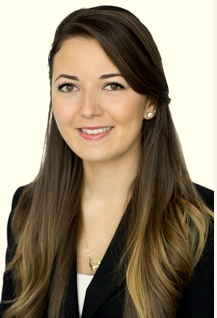Economic headwinds such as the decline in oil price and currency fluctuations in the US Dollar, geopolitical tension and tightening liquidity are placing pressure on governments in the GCC to prioritise strategic projects. As diversifying the economy and improving the tourism sector comes to the forefront of government agenda and with two major upcoming events in the region; the 2022 World Cup in Qatar and the 2020 World Expo in Dubai, there is no doubt that hospitality development is a clear priority across the GCC and the forecast for both hotel demand and supply growth remains strong.

Approximately 50% of the planned projects are in the UAE, followed by 24% in KSA, 12% in Qatar, 7% in Oman, 4% in Kuwait, and 3% in Bahrain. The UAE clearly dominates in terms of the number of projects in the pipeline, made up of 280 projects primarily within Dubai followed by Abu Dhabi, Sharjah and Ras Al Khaimah. KSA has over 130 projects in planning across 16 different cities with the largest concentration of planned projects being in Jeddah, Riyadh, Khobar, and Mecca.
Downward pressure on performance
In terms of the performance of the hotel market in the GCC, no two countries, or even cities, are alike. The nature of these markets, the performance and drivers of performance within each city are markedly different.
Despite the continuous growth in Dubais hotel supply, it still achieves the highest average daily rate (ADR) and occupancy compared to any major GCC city with 86.2% occupancy and an ADR of $216 recorded for the YTD March 2017. This signifies a slight increase in occupancy from 84% YTD 2016, but the rise in occupancy in 2017 has been achieved at the expense of a 6% decrease in ADR from $231 representing a decrease in RevPAR of 3.9%.
Dubais leading performance is followed by Abu Dhabi achieving 75% occupancy and an ADR of $130 and Sharjah at 84.5% occupancy albeit at a much lower ADR of $78 for YTD March 2017.
Muscat and Doha have achieved 68.7% and 68% occupancy and ADRs $181 and $180 YTD March 2017 respectively.
The lowest occupancies over this period were recorded in KSA with Al Khobar / Dammam at 49.2% followed by 54.2 percent in Jeddah and 57.2% in Riyadh. In addition, it indicates a drop from 62.5% and 66% for Khobar / Dammam and Jeddah respectively for the same period in the previous year.
Future outlook – A strong foundation to endure unpredictable market conditions
Existing market conditions and the planned growth in supply may cause downward pressure on performance levels across many of the cities in the GCC in the short to medium term as the GCC invests in tourism infrastructure, by improving the diversity of its offering, and by enhancing the supporting tourism infrastructure, it is building a strong foundation for the future, albeit at varying levels of progress across the different countries.
Both Dubai and Abu Dhabi continue to develop key cultural, leisure and entertainment attractions which are helping positon them as global tourism hubs. For the UAE the future continues to look positive despite downward pressure on performance, until supply growth and demand growth stabilise.
Qatar, on the other hand, while investment in the hospitality and tourism sector is growing and demand is steadily increasing, there is a risk that the demand growth is unlikely to be sufficient to support this level of supply growth post the 2022 FIFA World Cup.
Tourism in KSA continues to be driven primarily by religious and business tourism, but there is a strong focus on stimulating the domestic tourism offering to increase the proportion of Saudi nationals spending their leisure time in the Kingdom which is essential because this is a volume market. The outlook for the market is positive as tourism infrastructure is improved and entertainment and leisure offering is developed in line with creation of a dedicated authority, the General Authority For Entertainment. This is expected to have an especially positive impact on domestic tourism.
Investment into key tourism markets in Oman, including Muscat and Salalah, is helping position Oman as a differentiated destination which attracts both GCC and international source markets.
A key success factor for various cities will be diversifying their source markets and growing the various market segments (leisure, MICE, business) based on their locational attributes and offerings which will help the market endure the ever fluctuating political and economic market conditions in the region.




